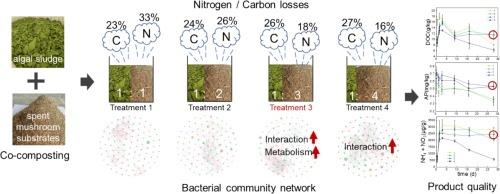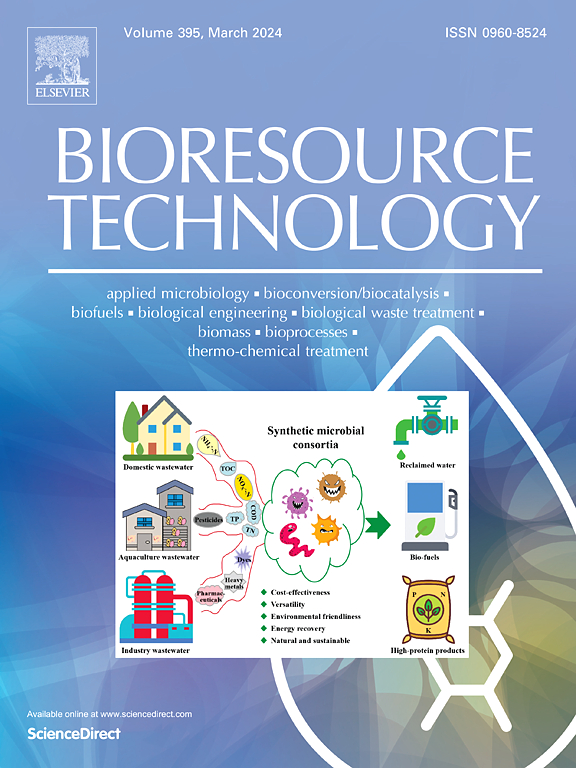藻类污泥好氧堆肥过程中的低碳氮比原料优化:质量和气体排放。
IF 9.7
1区 环境科学与生态学
Q1 AGRICULTURAL ENGINEERING
引用次数: 0
摘要
本研究调查了藻类污泥堆肥过程中的堆肥质量和气体排放。实验通过使用不同体积比的海藻污泥和废蘑菇基质(1:1、1:2、1:3 和 1:4,对应的碳氮比分别为 9.5、12.3、14.6 和 16.0),探索了低初始碳氮比堆肥的可行性。结果表明,增加初始材料中藻类污泥的比例会导致熟化时间延长和氮损失增加,但同时也提高了有机氮的矿化度(转化为 NH4+ 和 NO3-),减少了碳损失。在藻类污泥堆肥过程中,在一定范围内添加富含碳的膨松剂可提高细菌群落的多样性和相互作用。总之,考虑到四种处理中氮和碳的损失、保留和可用性,处理 3(C/N = 14.6)似乎是低 C/N 堆肥的最佳选择。本文章由计算机程序翻译,如有差异,请以英文原文为准。

Feedstock optimization with low carbon to nitrogen ratio during algal sludge aerobic composting: Quality and gaseous emissions
This study investigated compost quality and gaseous emissions during the algal sludge composting. The experiment explored the feasibility of low initial carbon to nitrogen (C/N) ratio composting by using different volume ratios of algal sludge and spent mushroom substrates (1:1, 1:2, 1:3, and 1:4, corresponding to C/N ratios of 9.5, 12.3, 14.6, 16.0, respectively). The results showed that increasing the proportion of algal sludge in the initial material led to a longer maturation time and higher nitrogen losses but also enhanced the mineralization of organic nitrogen (converted to and ) and reduced carbon losses. The addition of carbon-rich bulking agents within a certain range improved the diversity and interactions of bacterial communities during algal sludge composting. In conclusion, considering the nitrogen and carbon lost, retained, and made available across the four treatments, treatment 3 (C/N = 14.6) appears to be the optimal choice for low C/N composting.
求助全文
通过发布文献求助,成功后即可免费获取论文全文。
去求助
来源期刊

Bioresource Technology
工程技术-能源与燃料
CiteScore
20.80
自引率
19.30%
发文量
2013
审稿时长
12 days
期刊介绍:
Bioresource Technology publishes original articles, review articles, case studies, and short communications covering the fundamentals, applications, and management of bioresource technology. The journal seeks to advance and disseminate knowledge across various areas related to biomass, biological waste treatment, bioenergy, biotransformations, bioresource systems analysis, and associated conversion or production technologies.
Topics include:
• Biofuels: liquid and gaseous biofuels production, modeling and economics
• Bioprocesses and bioproducts: biocatalysis and fermentations
• Biomass and feedstocks utilization: bioconversion of agro-industrial residues
• Environmental protection: biological waste treatment
• Thermochemical conversion of biomass: combustion, pyrolysis, gasification, catalysis.
 求助内容:
求助内容: 应助结果提醒方式:
应助结果提醒方式:


